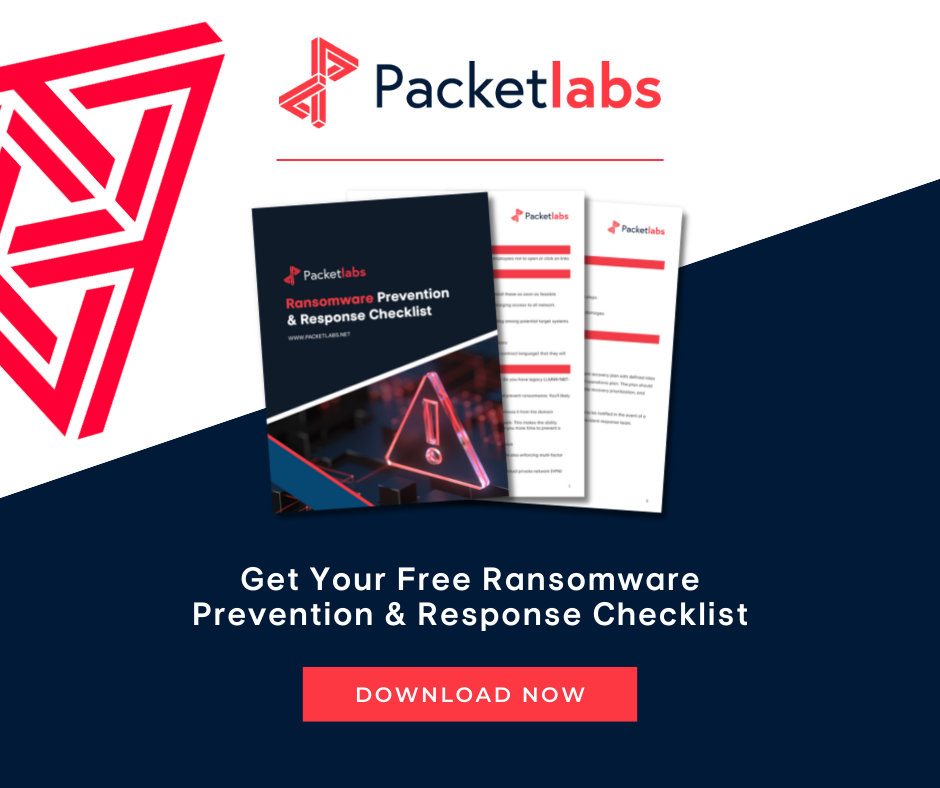Blog


Ransomware is a type of malware that encrypts your files and demands a ransom to decrypt them. It can be a devastating attack, especially if you don't have a backup of your data. A multi-layered security approach with anti-malware, a personal firewall, file encryption, and data loss prevention software (DLP) is the best way to protect your endpoints and infrastructure from cyber threats. These techniques, while effective against hackers, do not eliminate the threat of a cyberattack; as a result, you must backup your data.
How to Protect Your Data from Ransomware
From the point an attacker gains access to your infrastructure to the moment a ransom demand is made, the attack comprises several phases. Listed below is a high-level overview of what happens and how you can protect your business.

Click to download your free copy!
1. Prevent phishing attacks by hiding web-enabled programs
One of the simplest ways for attackers to gain access is by using compromised credentials acquired by phishing assaults. It is vital to examine web traffic on all devices to prevent these attacks from harming PC and mobile users. This method is a safeguard against ransomware operators, who mount an assault by compromising accounts.
Further, threat actors will search the web for outdated or insecure internet-facing infrastructure to exploit. The internet enables remote access for many firms and makes it easy for attackers to identify and exploit those apps. One of the most effective ways to protect these apps is to hide them. This way, you can move away from the unrestricted access provided by VPNs and ensure that only authorized users access the data they need.
2. Recognize and respond to unusual behaviour
If an attacker gains access to your infrastructure, they can move laterally to conduct surveillance. This surveillance helps the attackers identify flaws with the ultimate purpose of revealing sensitive data. They could change your settings to lower security permissions, exfiltrate data, and upload malware, among other things.
Understanding user behaviour and segmenting access at the application level is essential. By ensuring that your infrastructure is secure and that no user is operating maliciously, you can prevent lateral movement. It is also critical to detect excessive or incorrectly configured rights to avoid modifications to your app's and cloud's posture.
3. With proactive encryption, you may render data unusable for ransom
The final stage of a ransomware assault is the encryption of data. In addition to encrypting the data and shutting out your administrators, the attacker can exfiltrate some material for leverage, then trash or encrypt what remains in your infrastructure. It is usually exfiltration and its impact that allows the attacker to declare their presence.
Data changes (both at rest and in transit) are signs of a ransomware attack. If your security technology proactively encrypts data, rendering it utterly useless to a potential attacker, all their efforts will be in vain. The encryption of your most sensitive data is an essential component of any data loss prevention (DLP) plan. Triggering encryption through context data protection policies will assist you in securing your most sensitive data against compromise.
Final thoughts
An attack by ransomware is not a one-time occurrence; it is a continuing phenomenon. To protect your organization, you need to have a complete understanding of what is happening with your endpoints, users, apps, and data. Once you set up a proactive system, you can detect and respond to lateral movement, and your data is preserved even if it is exfiltrated and held to ransom.
Historically, organizations have purchased new tools to address emerging issues. However, this strategy will not work against threats such as ransomware. While you may have some insight into your users' access activities, the health of their corporate-owned devices, and how your data is managed, your security staff will have to maintain several isolated consoles to achieve this.
You can protect your organization's data with a comprehensive ransomware penetration test. Contact the Packetlabs team to learn more today!